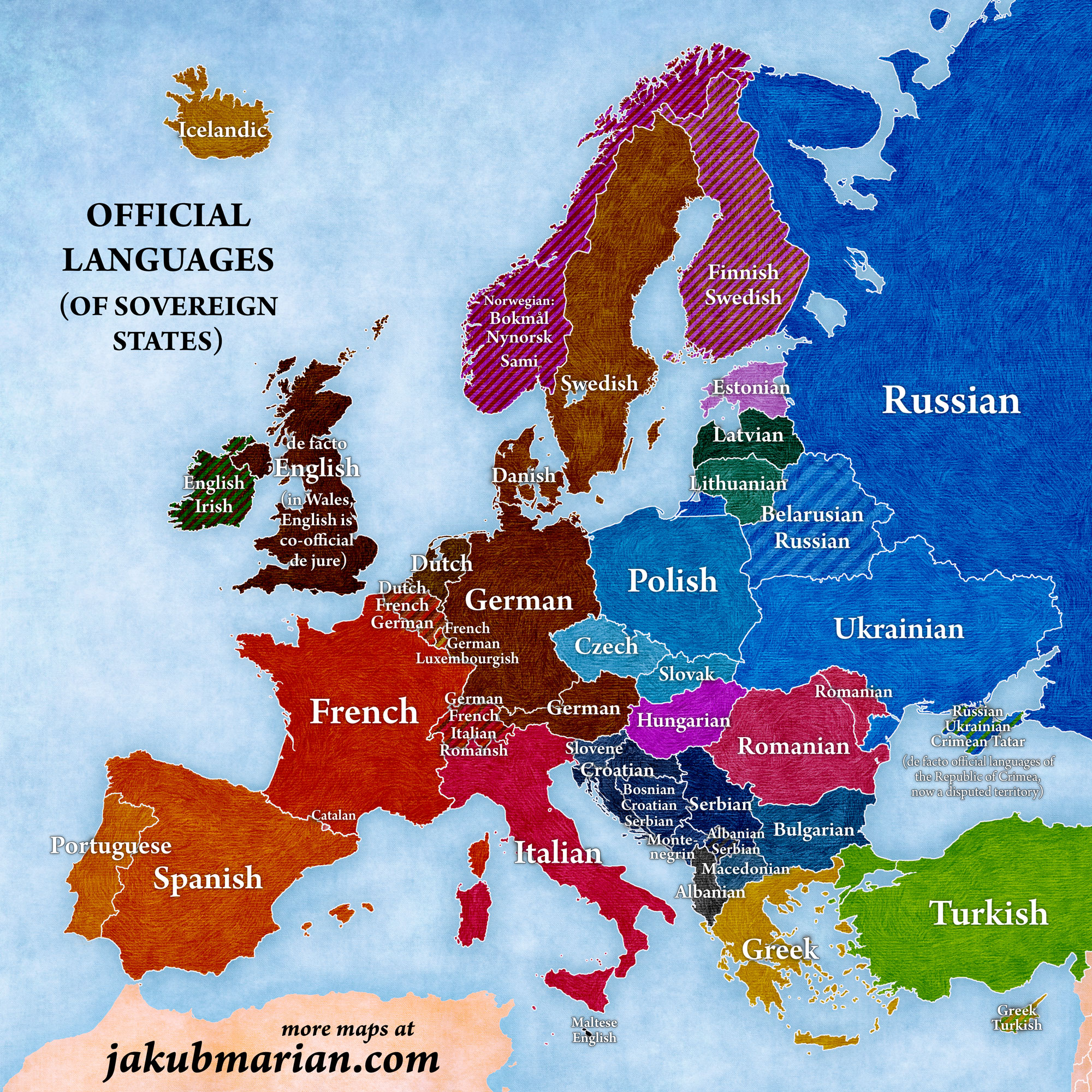Most European countries have just one official language. Some actually have none (which is the case of the United Kingdom, where English is de facto official—used by the government and courts—but not de jure official), and a few have two or more, the “winner” being Switzerland, which has four.
The map below shows European countries and their official languages. It does not show languages that are only official in smaller, non-sovereign territories (such as German states and Spanish autonomous communities). To see the distribution of minority languages, see my complete map of European languages.

Four countries are too small to be shown on the map: Liechtenstein (German), Monaco (French), San Marino (Italian), and Vatican City (Italian, de facto).
To make reading the map easier, here’s a list of all languages that are official in two or more European countries (including Turkey and Cyprus), ordered by number of countries:
| Language | European countries where the language is official |
|---|---|
| German | Germany Austria Switzerland Belgium Luxembourg Liechtenstein |
| French | France Belgium Switzerland Luxembourg Monaco |
| Italian | Italy Switzerland San Marino Vatican City (de facto) |
| Serbian Croatian Bosnian Montenegrin | Serbia Croatia Bosnia and Herzegovina Montenegro (Four standardized varieties of a single language. Serbian is official in Serbia and Bosnia, Croatian is official in Croatia and Bosnia, Bosnian is official in Bosnia, and Montenegrin is official in Montenegro. Note that in B&H, the languages are not official at federal level.) |
| English | United Kingdom (de facto) Ireland Malta |
| Russian | Russia Belarus |
| Turkish | Turkey Cyprus |
| Romanian | Romania Moldova |
| Dutch | Netherlands Belgium |
| Greek | Greece Cyprus |
| Swedish | Sweden Finland |
 Tip: Are you a non-native English speaker? I have just finished creating a
Tip: Are you a non-native English speaker? I have just finished creating a  Web App
Web App
